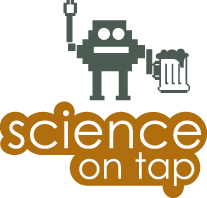For most of human history, textile dyes were organic: they came from plants, insects, or minerals harvested from nature. But then came synthetics — dyes made in the laboratory. For the first time, we could invent colors rather than imitate them. The Science History Institute’s newest exhibition, BOLD: Color from Test Tube to Textiles, offers a journey through the history of science with stops at coal mines, factory floors, and fashion runways.
Join our curator, Elisabeth Berry Drago and learn how the exhibition came together. You’ll learn how fashionable 19th-century buyers caught the “mauve measles,” dig into the strange history of Day-Glo, and be inspired by current trends towards sustainability and “green” dye processes.
Elisabeth (Lisa) Berry Drago is director of visitor engagement at the Science History Institute. She also cohosts (with Alexis Pedrick) the Institute’s podcast on the odd and fascinating histories of science, Distillations. She was previously a public history fellow at the Institute, where she curated Things Fall Apart (2017–2018) and Age of Alchemy (2018–2021). Berry Drago is the winner of a 2018 American Alliance of Museums’ Award for Excellence in Exhibition Label Writing (Things Fall Apart).
Berry Drago holds a PhD in art history from the University of Delaware, specializing in the representation of science and artisanal work, the history of the print, and artistic identity-making. Her most recent book, Painted Alchemists (Amsterdam University Press, 2019), is the first monograph on the painter Thomas Wijck (1616–1677), whose pictures of alchemists in the laboratory offer new perspectives on early modern science and artistry.

